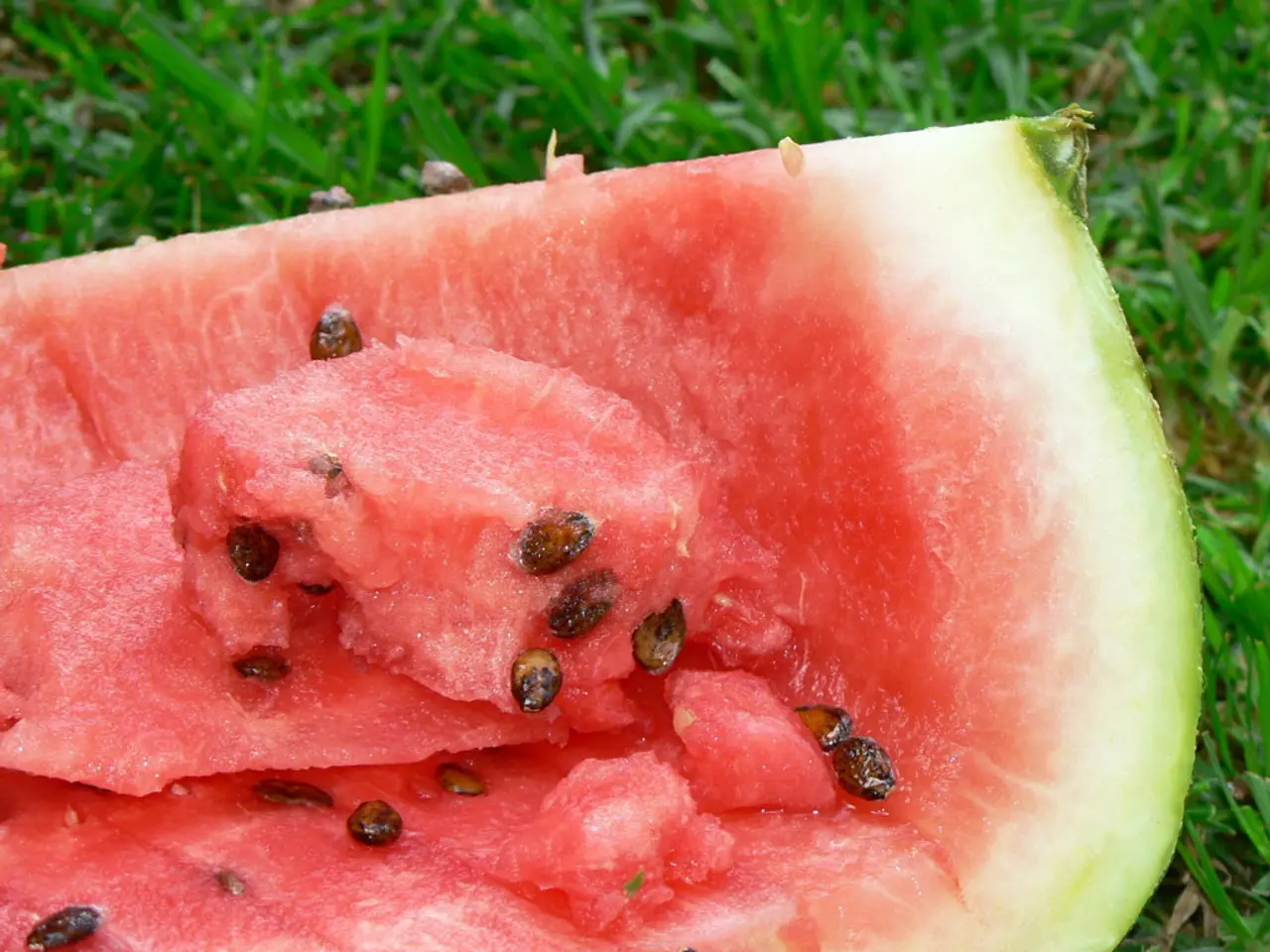Strategies to Cultivate Delicious Watermelons Throughout Summers
In the warm, sunny months, there's nothing quite like the taste of a juicy, ripe watermelon. If you're considering growing your own, here's a guide to help you get started.
Watermelons thrive in full sun with at least 6-8 hours of direct light daily, ideally 8 or more. They also require warm temperatures consistently above 60°F (16°C) and well-draining, slightly acidic to neutral soil (pH 6.0–7.5). To support their heavy feeding needs, it's recommended to amend the soil with compost or a balanced fertilizer before planting and during growth phases.
These ground-level vining plants need ample space for their spreading vines—about 3-5 feet between plants and 5 feet between rows. For optimal fruit sweetness, they prefer warm nights above 60°F.
Keeping the soil evenly moist but allowing the top inch to dry out between waterings is key. Watermelons require regular watering, especially during fruit development, but it's important to reduce watering near harvest to improve sweetness. Good air circulation is essential to prevent fungal diseases, so avoid high humidity and overcrowding.
When it comes to watering, watermelons require a lot of water and the soil should be kept moist to a depth of 6 inches. However, it's crucial to avoid soggy soil to prevent root rot.
Watch out for fungal diseases from poor air circulation or excess moisture, pests like aphids or cucumber beetles, and avoid planting in cold or frost-prone conditions. Deer are also attracted to watermelon foliage and can ruin a crop.
Watermelons usually mature in 85–95 days. Harvest when the ground spot turns yellow and the tendril near the fruit dries out. Store harvested watermelons in a cool place but not refrigerated for long-term as they can lose flavor; consume within a couple of weeks.
There are numerous watermelon varieties available, including seeded, seedless, picnic, and icebox types. Select based on growing space and climate. For container growing, use large pots with well-draining mixes and provide similar conditions of warmth, sunlight, and nutrient-rich soil.
This guide integrates practical care steps for watermelon plants from multiple recent expert sources and guides. Whether you're a seasoned gardener or a beginner, these tips will help you grow delicious watermelons in your garden.
Remember, the noise of a ripe watermelon sounds hollow when tapped, so listen carefully before harvesting! Happy gardening!
Incorporating watermelons into home-and-garden projects can be rewarding, allowing you to grow your own flavorful produce. When selecting varieties for your home-and-garden lifestyle, consider factors such as growing space, climate, and the need for ample sunlight like full sun with at least 8 hours daily, warm temperatures above 60°F, and well-draining soil. For container gardening, opt for large pots with well-draining mixes.








